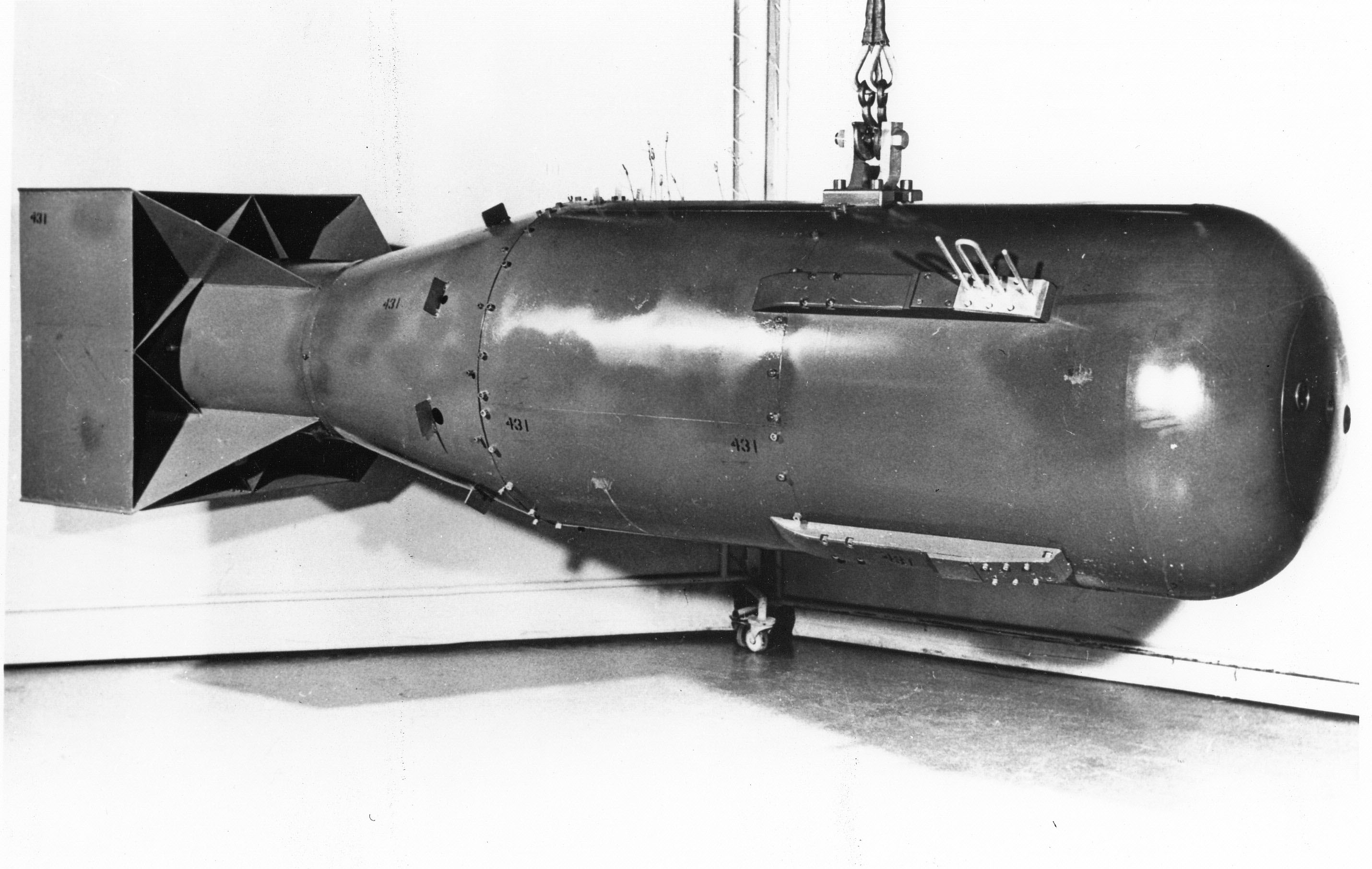- FloorEast Building third floor
- 5The Dangers of Nuclear Weapons
- 5-2The Menace of the Atomic Bomb
5-2-1The Atomic Bombs Dropped on Hiroshima and Nagasaki

“Little Boy”
Courtesy of U.S. National Archives and Records Administration
The fissile material for the Hiroshima bomb was uranium-235. Inside the bomb, the enriched uranium was divided into two pieces, both smaller than a critical mass. To trigger the atomic explosion, a chemical explosive forced one piece into the other, instantly creating a supercritical mass that sustained a chain reaction. The energy released by the explosion of this atomic bomb was equivalent to 16 kilotons of TNT.
The fissile material for the Nagasaki bomb was plutonium-239. The plutonium core was divided into two hemispheres, each less than a critical mass, surrounded by explosive charges. These chemical charges compressed the plutonium into a single, extremely dense supercritical mass. The energy released by this bomb was equivalent to 21 kilotons of TNT.
- Location
-

East Building third floor 5 The Dangers of Nuclear Weapons
5-2 The Menace of the Atomic Bomb
Permanent Exhibitions / Index of Areas, Sections, Topics



